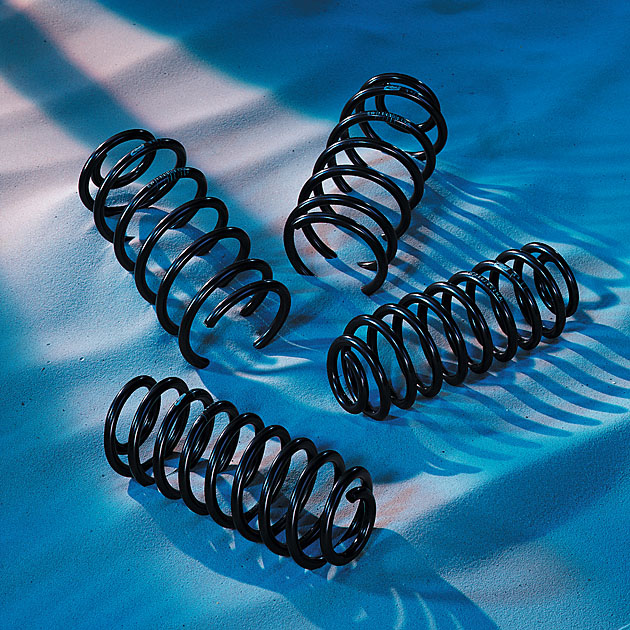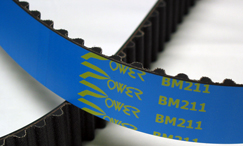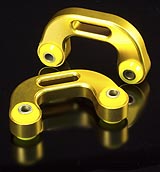
|
 |
||||
|
|
FAQ & How Things Work BHP vs TorqueTorque is a measure of the force available to accelerate the car. Power is how much work you can do with that torque in a given time. Think of it like this : a fairly average engine produces, say, 120 ftlbs of torque. With a fairly long torque wrench or breaker bar you can also apply 120 ftlbs to something like a bolt. The difference between your arm and an engine is that you can perhaps only manage 4-5 full rotations per minute, but the engine will happily do 3500-4000 per minute. The reason the acceleration is less at higher speed is because of 2 reasons. 1) at higher speeds you are in a higher gear. The higher gear ratio reduces the torque available at the wheels in exchange for faster rotation speed. Power available will always be the same regardless of gear (assuming same engine speed) because, ignoring any power losses in the transmission, power in = power out. Only the speed and torque are affected by gearing. 2) aerodynamic drag forces increase with the square of speed, therefore the power required to overcome the forces increases with the cube of speed (P=Fv). So to double your speed you need 8 times more power. So for example a small car with a top speed of 100mph and 75bhp, at its top speed all 75 horsepower is being used to overcome drag, and there is no surplus power to accelerate the car. So in theory to double the speed to 200mph, 8 times the power (600 bhp) would be required (obviously would not work in reality because of gearing etc). In terms of performance, for best acceleration you need an engine which produces max torque at high revs, and suitably matched gear ratios to make best use of the available torque. For top speed, because the drag forces are so large, you need as much power as possible and taller gear ratios. The most simple way for me is: Torque relates to the acceleration, and bhp relates to the overall picture of power and top speed. E.g. a car has a great bhp rating but very poor torque from its engine, you can brag all day about it doing 180mph but it would take forever to actually hit that speed, thats where torque comes in and gives you a hand. At its very simplest, one horsepower equals the amount of power it takes to perform 33,000 foot-pounds of work in one minute. To define it properly needs a bit of maths, but think of it as: Power = Torque x RPM Imagine we have a pulley at the top of a well that is 1 foot in radius (2 feet in diameter). At the bottom of the well, at the end of a rope leading round the pulley is a bucket of water weighing 100 pounds. Instead of using a horse to pull on the rope let's connect an engine to the pulley - perhaps by bolting the pulley to the crankshaft of the engine. In order to lift the bucket we need to apply a torque of 100 foot pounds to the pulley because the bucket is pulling down with a force of 100 pounds applied at 1 foot from the axis of rotation (the outside of the pulley). In other words the Torque applied is the Weight times the Radius of the pulley. If the engine turns the pulley at 1 revolution per minute how much work is being done? Well for each turn of the pulley the bucket will rise the same amount as the circumference of the pulley which is 6.28 feet (2 x pi times the radius = 2 x 3.14 x 1). So in 1 minute the engine will do [6.28 feet x 100lbs x 1RPM] 628 foot pounds of work. We can rearrange the above in terms of torque and speed: 33,000 ft-lbs of work per minute equals 1 hp. If we divide 33,000 by 6.28319 (2 x pi times the radius = 2 x 3.14 x 1), we get 5,252.1. This means that for every 5,252 revolutions per minute of 1 ft-lb of torque, we get 1 hp Horsepower = Torque x rpm / 5252 This is the universal equation that links torque and horsepower. It doesn't matter whether we are talking about petrol engines, diesel engines or steam engines. If we know the rpm and the torque we can calculate horsepower. If we know horsepower and rpm we can calculate torque by rearranging the equation above: Torque = Horsepower x 5250 / rpm When an engine is turning at 5250 rpm, its torque and horsepower figure is the same Torque = Horsepower x 5250 / 5250. On a graph of the torque and horsepower of an engine the lines should cross at 5250 rpm if the scales are for bhp and the torque is in ft lbs and both lines are shown on the same axes. If not then the graph is wrong. There are other units in which torque and horsepower can be measured - for example torque can be shown in Newton metres and power can be measured in Watts or PS which would show differntly on graphs. The "continental horsepower" or PS measure (German - PferdeStarke - One PS is about 98.6% of one bhpand called a "CV" for Cheval Vapeur in France) was chosen in Europe as being the closest thing to a horsepower that could be expressed in nice round metric units - 75 kilogramme metres per second. It is often used by car manufacturers and seems to be used as a horsepower figure although One PS is around 98.6% of one bhp. Previous - Clutches TOP
|
|

|























